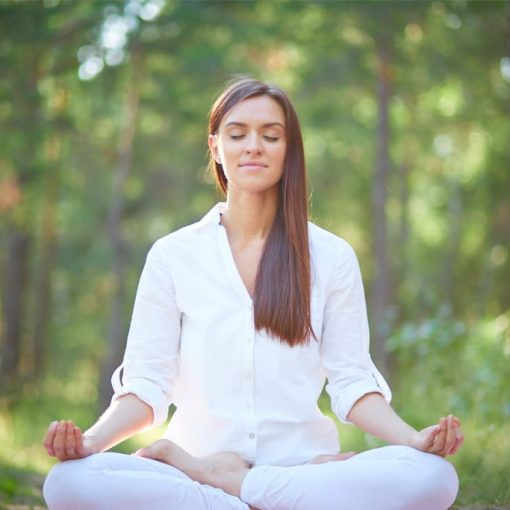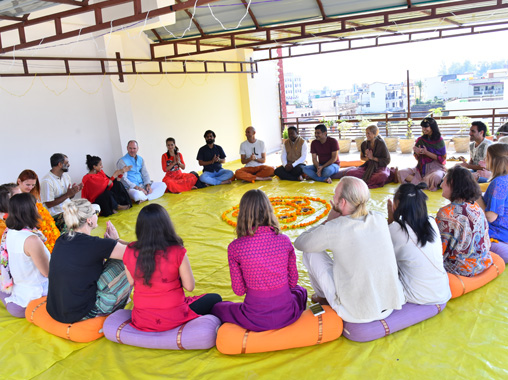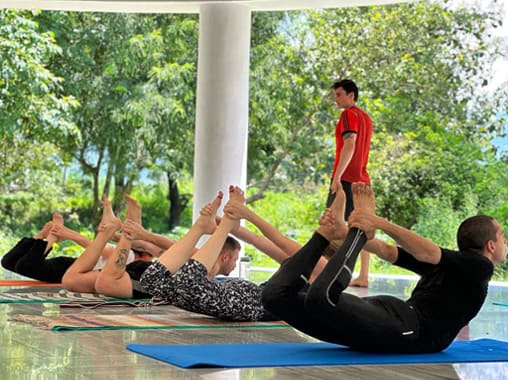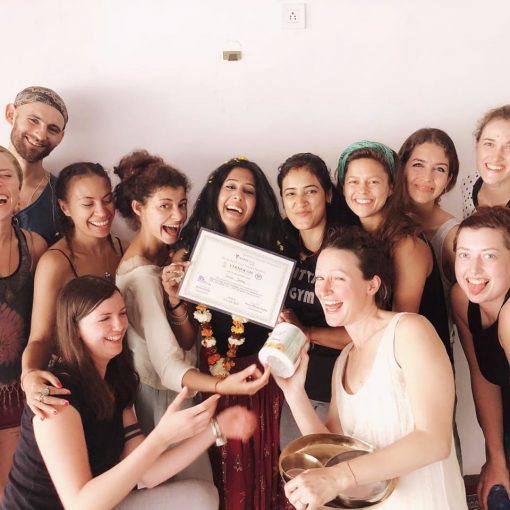Corpse pose or Savasana is a yoga pose that is practiced at the end of every yoga session. It is known as one of the most significant asanas in yoga. The term is derived from 2 Sanskrit words ‘Corpse’ which means ‘Shava’ and ‘Pose’ which means ‘Asana’ In this pose, the body is in a state of complete relaxation, just like a dead body. It is an effortless yet effective technique that you may perform at any time. The corpse posture promotes intense relaxation and works to ease tension, stress, and fatigue. It is a useful technique for ending a yoga or meditation session. In addition to helping with balance and posture, the corpse poses also promotes relaxation and peace. You can have more mental clarity, physical relaxation, and emotional balance by consistently performing corpse posture. Read more to uncover about Corpse Pose if you’re searching for a way to unwind and revitalize yourself!
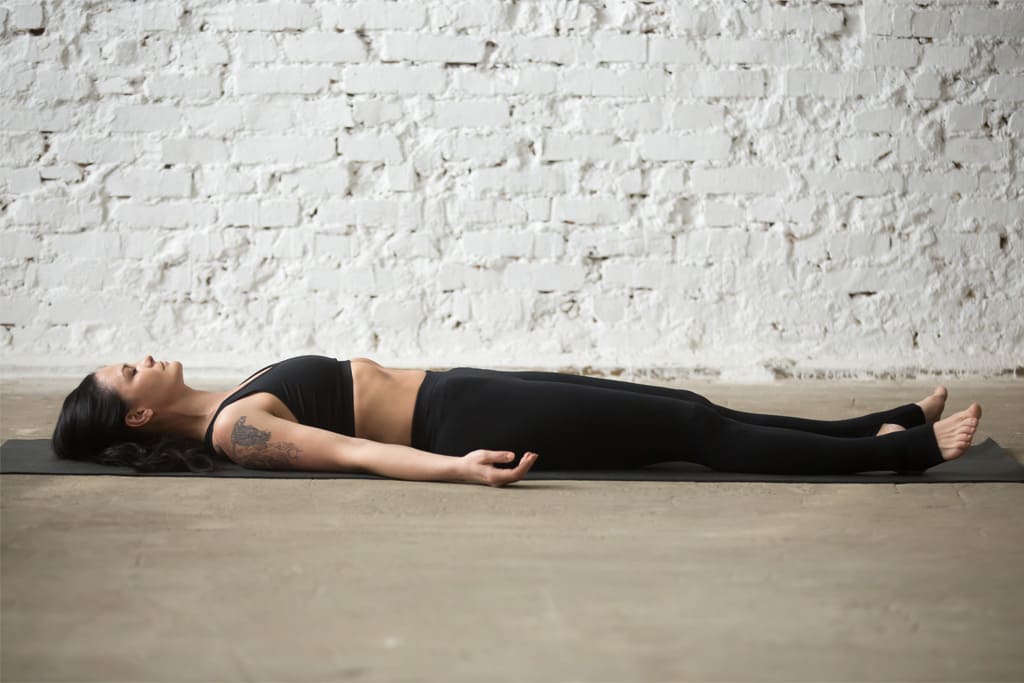
How to Practice Corpse Pose (Savasana)
The corpse pose is simple to perform and does not require any special equipment. The steps to doing Corpse Pose are as follows:
- Lie down straight on your back with your arms at your sides, palms facing up, and your leg should be straight where your feet fall in a comfortable posture.
- Close your eyes and take a few deep breaths.
- Start with your toes and slowly go up to the top of your head, and let your entire body relax.
- Let your body sink into the ground while focusing on your breathing.
- Stay in the pose for five to ten minutes or longer if you wish.
Benefits of Corpse Pose (Savasana)
The corpse pose has numerous benefits for the body and mind. Here are some of the most essential benefits of Corpse Pose:
- Reduces Stress: The Corpse Pose or Savasana is a great way to reduce stress anxiety. It also helps to calm the mind body and soul by lowering the levels of stress hormones in the body.
- Improves Sleep: By reducing stress and promoting relaxation, the corpse’s pose improves the quality of sleep.
- Reduces Fatigue: By allowing the body to rest and heal, the corpse pose reduces fatigue.
- Reduces Blood Pressure: By reducing tension and promoting relaxation, the corpse’s position lowers blood pressure.
- Improves Awareness: The corpse pose can help you become more focused and aware by increasing your awareness of your body, breath, and mind.
Common mistakes while performing Corpse Pose (Savasana)
- Not fully relaxing: One of the biggest mistakes individuals make in corpse pose is not allowing their bodies to completely rest. Try to release all stress and completely relax each part of your body because this position is designed to be a deep relaxation and rejuvenation of the mind and body.
- Falling asleep: While it’s necessary to relax, it’s a common mistake to fall asleep while performing the corpse pose. To stay in the present, try to maintain awareness and focus on your breathing or the other focus of concentration.
- Not staying in the pose long enough: The corpse pose is performed for a set period, usually between 5 and 15 minutes. Avoid standing up too quickly and give yourself time to fully experience the pose’s relaxing effects.
- Not using props: Blankets or cushions, can support your body and enhance the comfort of Savasana if you find it difficult to relax in the posture completely.
- Holding tension in the body: It’s possible to hold tension in some areas of the body even while you’re at rest. Try to mentally and physically examine your body for any stiffness or stress you might be holding.
Safety and Precautions
- If you are facing any medical conditions like back pain, neck pain, or any other physical ailment. It is important to consult your doctor before practicing corpse pose.
- Women who expecting should avoid lying flat on their backs for a longer period, especially after the first trimester. Props like cushions and bolsters can be used as support to raise the head and upper body.
- Before performing this pose, please consult your doctor if you have any injuries or medical issues.
- While it’s normal to feel relaxed in corpse pose, try to keep mindful of your breath to avoid falling asleep.
- If you have been holding other yoga postures before the corpse poses, you shouldn’t rush to stand up from it. Before rising, take your time releasing the pose and carefully settling back into a sitting position.
Conclusion
The corpse posture is a simple yet effective relaxation pose that has many benefits for both the mind and body. It’s important to approach the posture mindfully and with intention, giving oneself the space to completely relax and let go of any stress or tension. You may enhance your general sense of well-being and encourage more relaxation and calm in your everyday life by routinely performing corpse posture.
Frequently Asked Questions:-
Is Corpse Pose suitable for beginners?
Yes, Corpse Pose is suitable for beginners. It is a foundational pose that can be practiced by individuals of all levels.
Can I fall asleep during Savasana?
While it’s essential to maintain awareness during Savasana, it’s not uncommon to drift into a deeply relaxed state or even fall asleep. If you find yourself falling asleep regularly, consider shortening the duration of your Savasana or practicing it earlier in the day.
How long should I stay in Corpse Pose?
The duration of Savasana can vary depending on your preference and available time. Aim for at least 5-10 minutes initially and gradually extend it to 15-20 minutes for a more profound experience.
Can Corpse Pose help with anxiety?
Yes, practicing Corpse Pose can help reduce anxiety by promoting relaxation, calming the mind, and allowing for a mindful connection to the present moment.
Is it necessary to close your eyes during Savasana?
Closing your eyes during Savasana helps minimize distractions and allows you to turn your focus inward. However, if you feel uncomfortable closing your eyes, you can soften your gaze or use an eye pillow to block out external stimuli.

